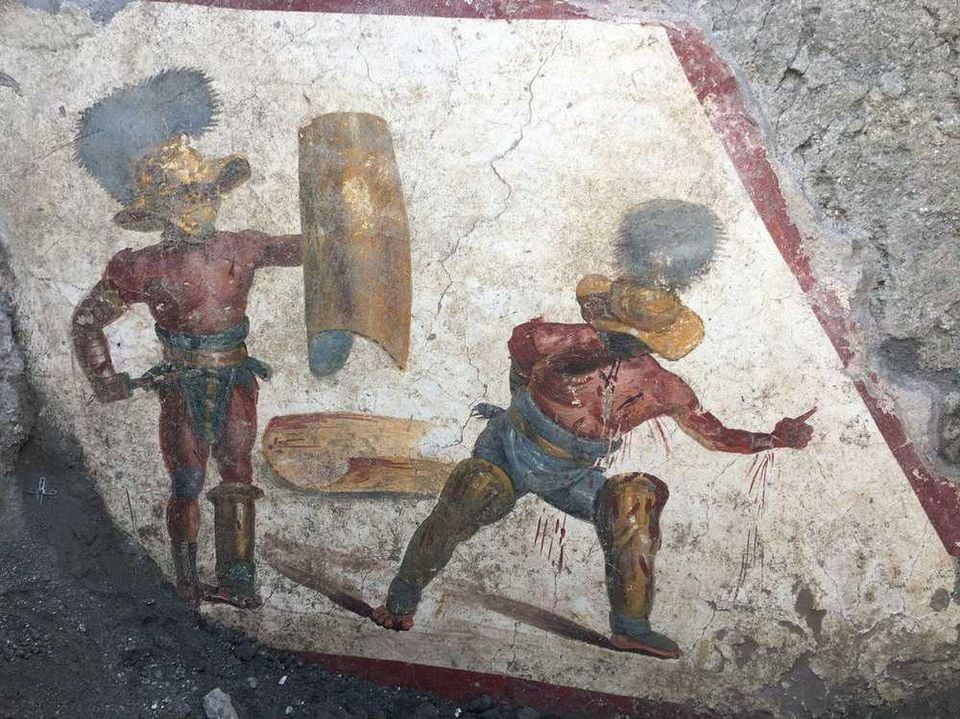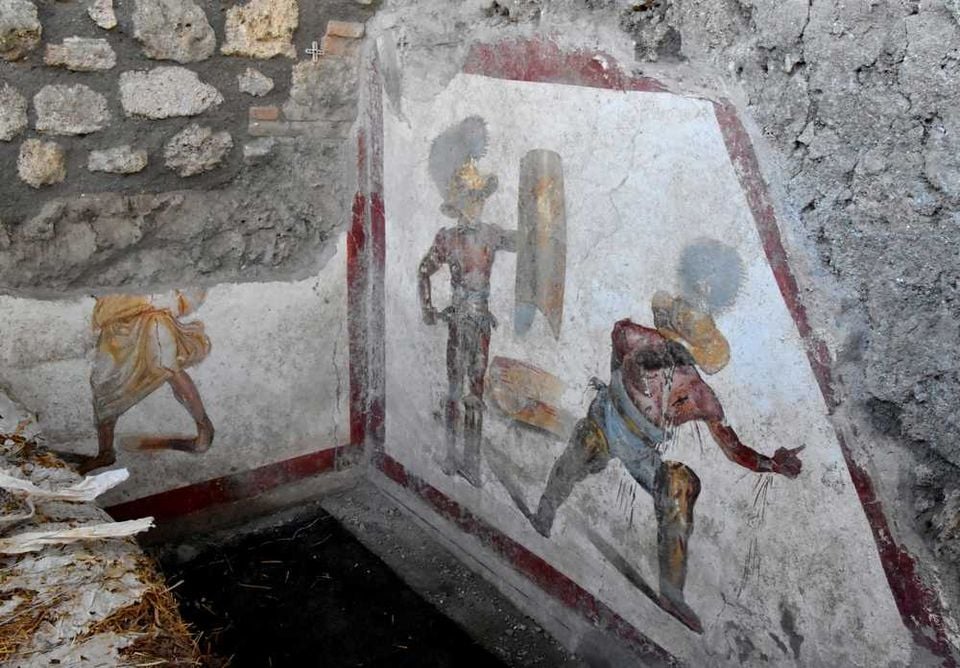Art World
A Harrowingly Realistic Fresco of Gladiators in Life-or-Death Combat Has Been Unearthed in Pompeii
Excavations are yielding new marvels in the ancient city of Pompeii.

Excavations are yielding new marvels in the ancient city of Pompeii.

Sarah Cascone

Archaeologists have found a new fresco depicting fighting gladiators in the ancient city of Pompeii, Italian culture minister Dario Franceschini announced today.
The ancient painting was found in a basement in the Regio V section of Pompeii—which is not yet open to the public—near the Alley of the Balconies and the Street of the Silver Wedding. Experts believe the building may have housed a tavern on the ground floor and a brothel above, and that the painting suggests that the establishment was frequented by gladiators.
“Gladiators in Pompeii used prostitutes a lot, then covered walls with graffiti about the amount of sex they were having. They were from the lowest levels of society, and unlike today’s footballers did not go in for model wives,” Pompeii director Massimo Osanna told the London Times.
The ancient fresco shows two fighters in action, one holding a sword, the other lowering his shield in defeat. “This fresco is the very realistic representation of wounds on the wrist and chest of the unsuccessful gladiator,” added Massimo Osanna in a statement reported by the Guardian. “We don’t know the outcome of the fight, he could have died or was given grace.”
Excavations at the site continue to yield new wonders more than 250 years after the initial discovery of Pompeii, a fragment of the Roman that was empire frozen in time after the eruption of Mount Vesuvius in 79 AD buried the city in volcanic ash.

The new gladiator fresco discovered in Pompeii. Photo courtesy of the Italian Cultural Ministry ©2019.
Archaeologists began work in the area where the fresco was found last year as part of the Great Pompeii Project, an EU-backed conservation effort launched in 2012. At the time, the ruins of Pompeii were in a state of neglect. Ancient walls were crumbling during heavy rains, prompting UNESCO to threaten to remove the city from its World Heritage List.
“A few years ago the archaeological site of Pompeii was known throughout the world for its negative image: the collapses, the strikes, and the queues of tourists under the sun,” Franceschini told journalists. “Today’s story is one of redemption.” The announcement coincided with the opening of the exhibition “Pompeii and Santorini: Eternity in One Day” at Rome’s Scuderie del Quirinale, on view through January 6, 2020.
The discovery of the gladiator fresco follows several other recent art finds at the site, including a fresco of Zeus, in the form of a swan, seducing Leda; paintings and and a garden shrine at a thermopolium—an ancient Roman fast food restaurant; as well as a trove of amulets and charms belonging to a sorceress.
Some 54 acres—or a third of the ancient city—have still never been excavated, which means Pompeii will no doubt continue to yield new secrets for years to come.